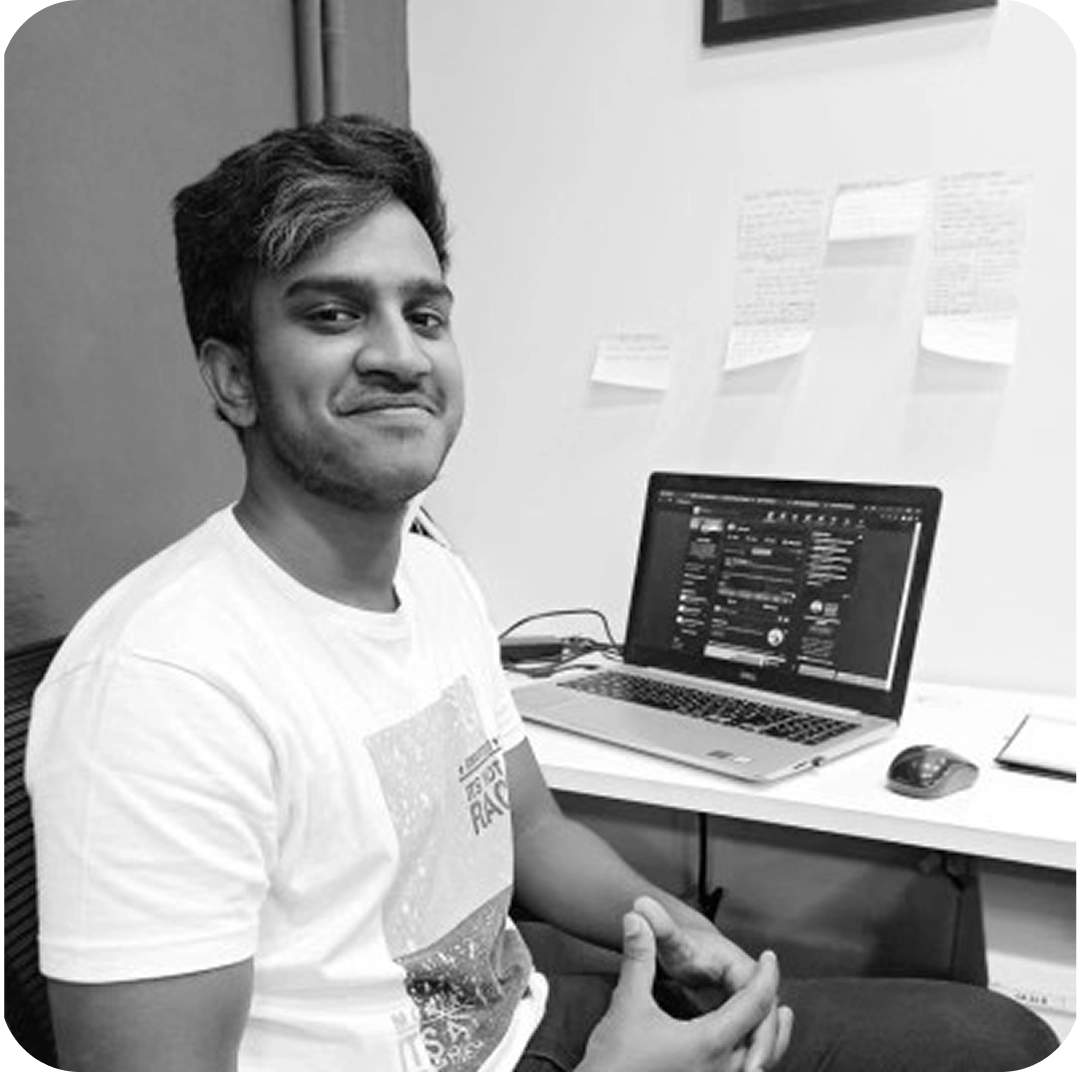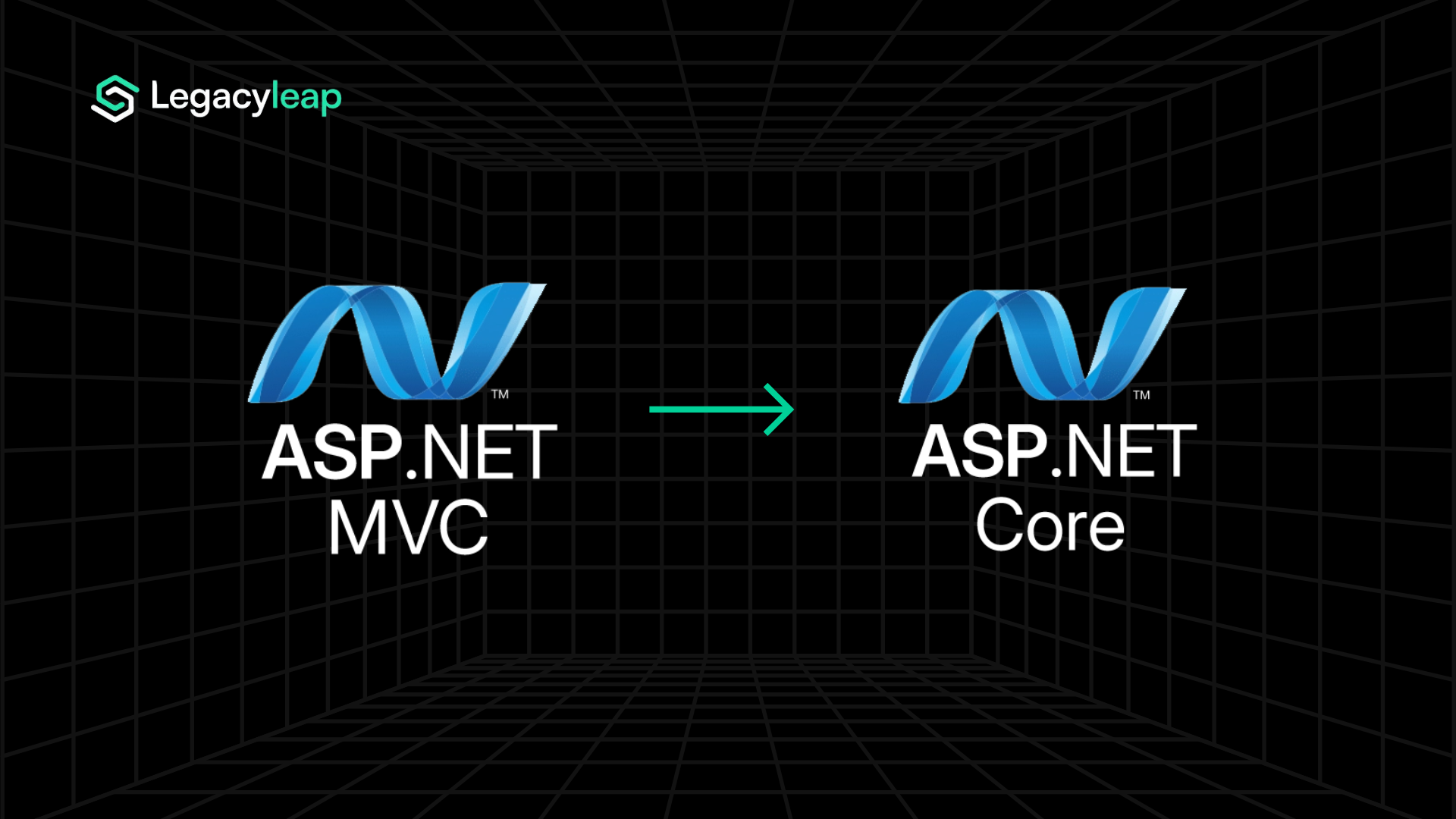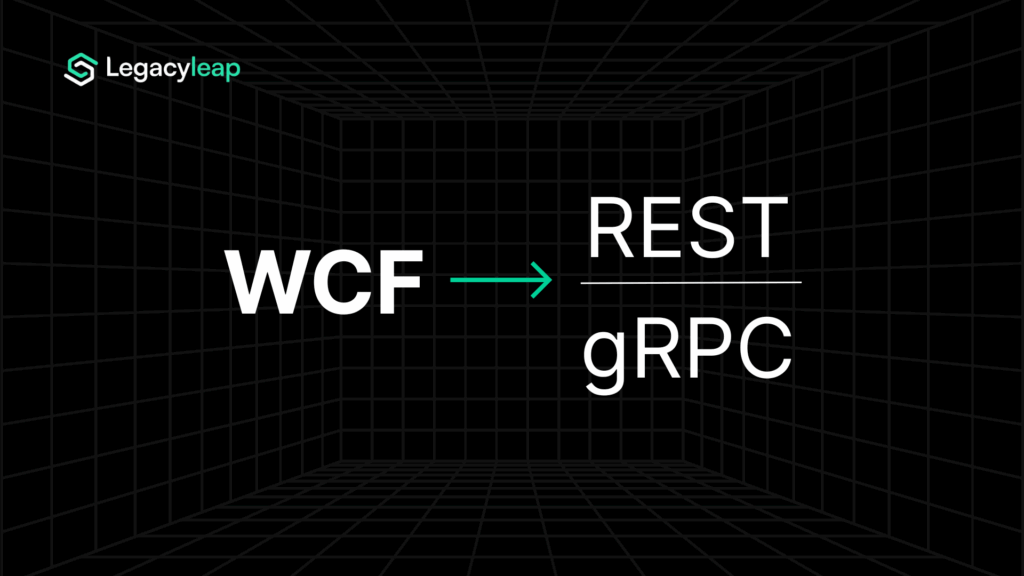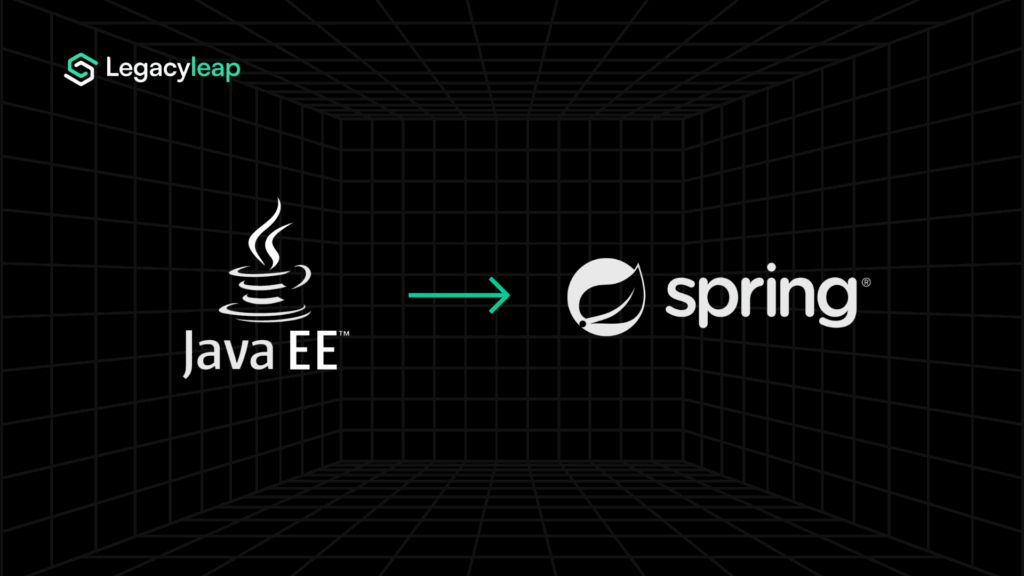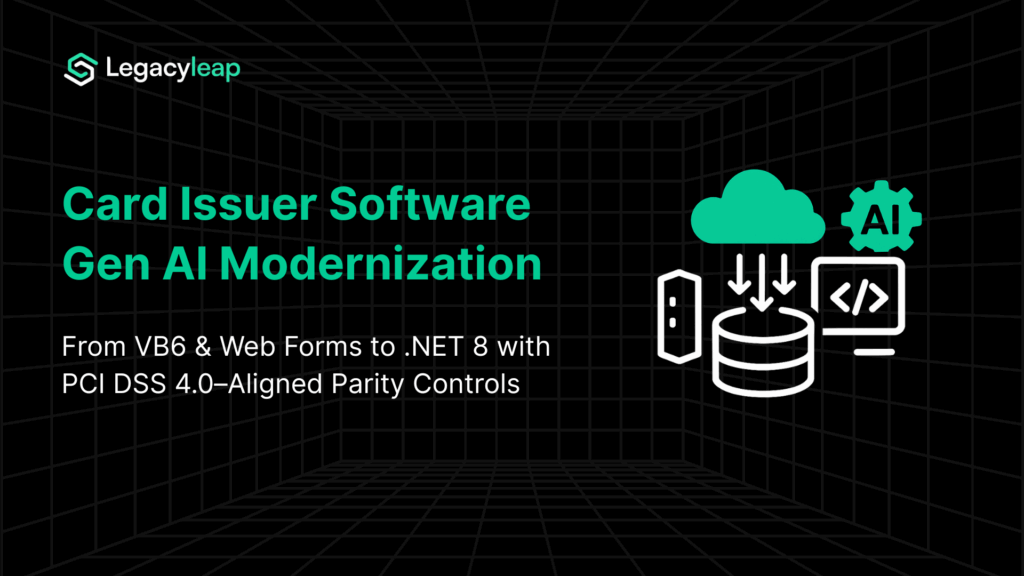Introduction: Why Enterprises Must Move Beyond ASP.NET MVC
ASP.NET MVC is effectively frozen. Earlier versions are already retired (MVC 4 went out of support in 2019), and MVC 5 runs only on .NET Framework 4.8, which itself is in maintenance-only mode, tied to Windows and receiving security fixes only.
Microsoft has stated it will give 12 months’ notice before ending MVC 5 support, leaving enterprises without certainty on timelines or long-term viability.
The risks are clear. Business-critical applications are trapped on a legacy framework with no roadmap, rising compliance exposure, and a shrinking talent pool of developers willing to maintain outdated stacks.
Meanwhile, modern .NET has matured into the default enterprise platform, with predictable release cadences and long-term support cycles (e.g., .NET 8 LTS through 2026, .NET 10 LTS extending into 2028).
Industry adoption confirms the trend. In JetBrains’ 2023 Developer Ecosystem survey, 56% of C# developers reported using ASP.NET Core, making it the most widely adopted .NET web framework. Regulatory pressure is also mounting: several U.S. agencies already mandate migration off unsupported frameworks to maintain compliance.
For CIOs and CTOs, the conclusion is straightforward: ASP.NET MVC migration is not optional, but the question is how to execute it without disruption, cost overruns, or brittle rewrites.
Why Enterprises Choose ASP.NET Core
Migrating to ASP.NET Core delivers measurable value across performance, infrastructure, and development velocity:
| Capability | ASP.NET MVC (Legacy) | ASP.NET Core |
| Performance | IIS hosting, synchronous pipelines, XML-heavy | Kestrel server, async I/O, 2–3x higher throughput |
| Infrastructure | Windows-only, higher CPU/memory | Cross-platform, Linux-ready, 30–50% fewer servers in practice |
| Cloud readiness | Limited containerization | First-class Docker/Kubernetes support, PaaS-ready (Azure App Service, AWS Elastic Beanstalk) |
| Developer productivity | Separate MVC/Web API, web.config, fragile DI | Unified controllers, built-in DI, modular middleware, JSON-based config |
| Future-proofing | End-of-line, no innovation | Predictable LTS cadence, hundreds of runtime optimizations each cycle |
Key benefits for enterprises:
- Performance and cost savings: Organizations report halved CPU utilization and reduced VM counts post-migration. CoStar Group achieved up to 90% compute cost reduction by moving workloads to Core.
- Cloud-native enablement: Core applications run seamlessly in containers and scale on Kubernetes, unlocking modern DevOps and infra efficiencies.
- Developer efficiency: Unified frameworks, cleaner configuration, and modular middleware accelerate delivery and reduce technical debt.
- Long-term stability: Each LTS release secures three years of enterprise support, eliminating the uncertainty surrounding legacy frameworks.
For enterprises, the payoff is not just compliance. It’s a future-ready platform that reduces infrastructure spend, accelerates delivery, and enables cloud-scale agility.
Also read: A Complete .NET Migration Guide for Modernizing Legacy Microsoft Stacks.
Common ASP.NET MVC to ASP.NET Core Migration Challenges
Migrating from ASP.NET MVC to Core is rarely a straight line. The technical gaps are well-known, but at enterprise scale they translate into project risk, delays, and escalating costs:
- System.Web dependencies:
- Core no longer supports System.Web. Constructs like HttpContext.Current, HttpModules, and HttpHandlers must be redesigned as middleware.
- Risk: Large codebases often contain hundreds of scattered references that block direct upgrades.
- Core no longer supports System.Web. Constructs like HttpContext.Current, HttpModules, and HttpHandlers must be redesigned as middleware.
- Configuration overhaul:
- XML-based web.config files are replaced by JSON-based appsettings and dependency injection via the Options pattern.
- Risk: Configuration drift during incremental cutovers can break environments and slow rollouts.
- XML-based web.config files are replaced by JSON-based appsettings and dependency injection via the Options pattern.
- Authentication and authorization shifts:
- Forms Authentication and OWIN pipelines give way to ASP.NET Core Identity and cookie/JWT middleware.
- Risk: Incremental migrations often require cookie sharing and key synchronization, which can be error-prone and expose security gaps.
- Forms Authentication and OWIN pipelines give way to ASP.NET Core Identity and cookie/JWT middleware.
- EF6 vs EF Core transition:
- EF6 can run temporarily on .NET 6+, but long-term parity requires refactoring to EF Core.
- Risk: Stored procedure-heavy apps or legacy provider dependencies can stall migration progress.
- EF6 can run temporarily on .NET 6+, but long-term parity requires refactoring to EF Core.
- Third-party package gaps:
- Many NuGet libraries built for MVC 5/Framework lack Core equivalents.
- Risk: Teams must rebuild or replace functionality, adding unexpected scope.
- Many NuGet libraries built for MVC 5/Framework lack Core equivalents.
- Incremental vs big-bang strategy:
- Microsoft recommends phased migration using reverse proxies like YARP.
- Risk: Without strong governance, hybrid systems introduce complexity, duplicated effort, and unclear cutover timelines.
- Microsoft recommends phased migration using reverse proxies like YARP.
For CIOs, these are the reasons why projects miss deadlines, overshoot budgets, and create uncertainty about when (or if) the migration will succeed.
How Gen AI Transforms ASP.NET MVC to Core Migration
Traditional migrations involved months of manual rewrites, reverse-engineering undocumented code, and hand-written regression tests. Even with Microsoft’s Upgrade Assistant, projects stretched 6–12 months with limited assurance of success.
Gen AI with compiler guardrails transforms that model by automating the riskiest steps:
- Automated comprehension: Full application parsing generates dependency graphs, Swagger specs, and system-level documentation. Leaders get visibility into scope and blockers before migration begins.
- Code transformation with validation:
- System.Web references → middleware.
- web.config → Options pattern.
- Forms Auth/OWIN → Core Identity + JWT middleware.
- Outputs are compiler-constrained, ensuring structural correctness.
- System.Web references → middleware.
- Functional parity-first validation: Auto-generated test suites replicate legacy workflows against the new Core application. Regression gates wired into CI/CD confirm business logic remains intact.
- Support for phased or full cutovers: Dependency mapping and automated scaffolds make both YARP-based phased rollouts and big-bang rewrites feasible, without guesswork.
The enterprise impact:
- Predictable timelines: Clear scoping replaces uncertain project plans.
- Lower risk: Parity and security validated before cutover.
- Faster execution: Timelines compressed from 6–12 months to 2–4 months.
Gen AI isn’t about speeding up developers with snippets. It’s about turning an unpredictable, brittle migration into a structured, verifiable program that business leaders can trust.
Also read: How Can Gen AI Drive Every Step of Your Modernization Journey?
Legacyleap in Action: Streamlined ASP.NET Core Migration
Migrating from ASP.NET MVC to Core is about removing uncertainty from scope, parity, and deployment. Legacyleap was designed as a companion platform for exactly this scenario, combining compiler intelligence with Gen AI agents to make migrations predictable and verifiable.
How Legacyleap supports MVC to Core migrations:
- Complete system mapping before migration: Applications are parsed into ASTs and MLIR, then stored in graph databases for a 100% dependency map across controllers, views, services, and packages. Leaders know the exact scope and blockers before execution begins.
- Enterprise-ready security alignment: Legacy Forms Auth or OWIN flows are mapped to modern cookie/JWT middleware with policy blueprints. Outputs are validated against OAuth2/OIDC standards to meet enterprise compliance requirements.
- Functional parity guarantees: Golden workflows from MVC apps are captured and replayed against Core services. Auto-generated regression tests integrate into CI/CD pipelines, ensuring 100% functional parity validated before cutover.
- Deployment artifacts built in: Helm charts, Terraform scripts, and Dockerfiles are generated automatically, making Core apps cloud-ready from day one. This accelerates rollouts to Kubernetes, Azure App Service, or AWS Elastic Beanstalk without extra scripting.
- Assurance for leadership: Predictable scope, validated parity, and secure deployment translate into faster timelines (2–4 months vs 6–12), reduced infra costs (Linux density, Kubernetes scaling), and lower compliance risk.
Legacyleap isn’t a migration script or developer tool. It’s an enterprise modernization framework that transforms MVC migration from a risky project into a structured, auditable process.
How Legacyleap Streamlines ASP.NET Core Migration
| Migration Area | Traditional Approach | With Legacyleap |
| Code transformation | 100% manual rewrite | 70% automated with guardrails |
| Test & validation | Manual test authoring | 90% auto-generated safety nets |
| Timeline | 6–12 months | 2–4 months |
| Developer effort | High manual workload | 60–80% reduced |
| Deployment readiness | Manual scripting required | Auto-generated Helm/Terraform |
Plan Your ASP.NET Core Migration with Confidence
ASP.NET MVC is stagnant, .NET Framework is frozen, and Core has become the enterprise default.
The benefits are proven: 2–3x performance improvements, lower hosting costs, cross-platform deployments, and developer productivity gains.
The challenge is execution: System.Web dependencies, authentication shifts, EF6 refactoring, and NuGet gaps all create risk if handled manually.
This is where Gen AI with compiler guardrails and Legacyleap’s structured platform changes the equation. Enterprises no longer need to rely on brittle rewrites or uncertain project plans. Instead, migrations can be executed with clear scope, validated parity, and secure deployment from the start.
Start with a $0 ASP.NET Core migration assessment. In just two weeks, you’ll get a dependency map of your application, a security scan of known vulnerabilities, and a feasibility view of modernization scope and effort, at no cost, and with no risk.
FAQs
ASP.NET MVC 5 runs only on .NET Framework 4.8, which is feature-frozen and tied to Windows. It has no future roadmap, creating long-term technical debt and compliance risks.
ASP.NET Core is cross-platform, cloud-native, and optimized for performance. It lowers hosting costs and enables modern DevOps practices.
Legacyleap Gen AI eliminates brittle rewrites by automating code transformation and enforcing parity validation through compiler-grade checks.
Yes. Phased migration strategies allow MVC apps to coexist with Core modules, ensuring continuity while migration progresses.
Timelines that normally stretch 6–12 months are often reduced to 2–4 months, with predictable scope and enterprise-grade validation.

